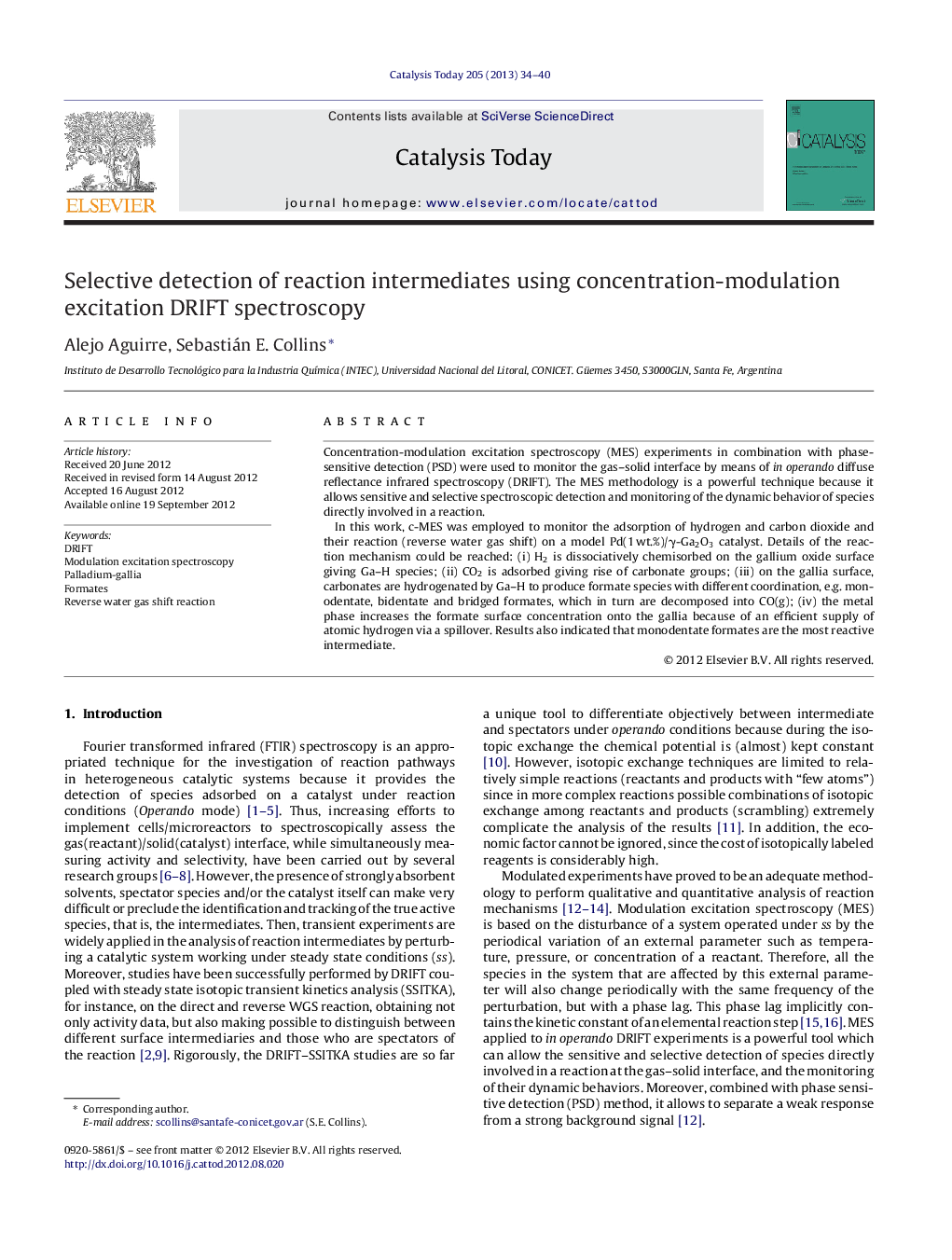| Article ID | Journal | Published Year | Pages | File Type |
|---|---|---|---|---|
| 54926 | Catalysis Today | 2013 | 7 Pages |
Concentration-modulation excitation spectroscopy (MES) experiments in combination with phase-sensitive detection (PSD) were used to monitor the gas–solid interface by means of in operando diffuse reflectance infrared spectroscopy (DRIFT). The MES methodology is a powerful technique because it allows sensitive and selective spectroscopic detection and monitoring of the dynamic behavior of species directly involved in a reaction.In this work, c-MES was employed to monitor the adsorption of hydrogen and carbon dioxide and their reaction (reverse water gas shift) on a model Pd(1 wt.%)/γ-Ga2O3 catalyst. Details of the reaction mechanism could be reached: (i) H2 is dissociatively chemisorbed on the gallium oxide surface giving Ga–H species; (ii) CO2 is adsorbed giving rise of carbonate groups; (iii) on the gallia surface, carbonates are hydrogenated by Ga–H to produce formate species with different coordination, e.g. monodentate, bidentate and bridged formates, which in turn are decomposed into CO(g); (iv) the metal phase increases the formate surface concentration onto the gallia because of an efficient supply of atomic hydrogen via a spillover. Results also indicated that monodentate formates are the most reactive intermediate.
Graphical abstractFigure optionsDownload full-size imageDownload high-quality image (179 K)Download as PowerPoint slideHighlights► Concentration-modulation excitation infrared spectroscopy was used to monitor surface intermediates. ► Reverse water gas shift reaction was investigated on a Pd(Ga)/Ga2O3 catalyst. ► Carbonates, formates and gallium hydride were selectively detected. ► Monodentate is the most reactive formate intermediate.
